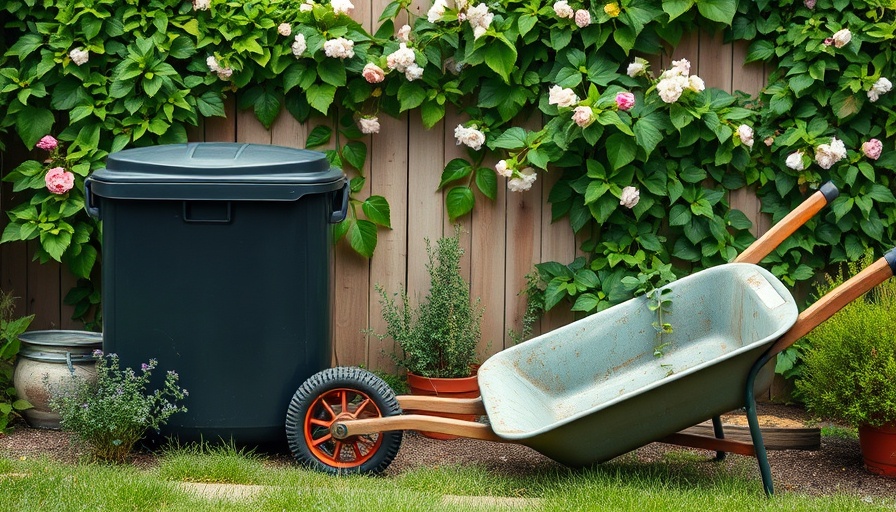
Understanding Composting: A Green Investment for Your Garden
Composting is more than just a sustainable gardening practice; it's a way to turn waste into treasures that enrich your soil and enhance your garden's overall health. Yet, many newcomers are daunted by the process. Fear not! With the right compost recipe and a little knowledge, you'll be on your way to transforming kitchen scraps and yard waste into valuable compost.
The Core Components of Compost: Greens, Browns, Air, and Moisture
Home composting relies on a delicate balance of ingredients to create a nutrient-rich mix. The essential components include:
- Greens (Energy Materials): These are nitrogen-rich materials like grass clippings and kitchen scraps. While they decompose rapidly, they need to be balanced with carbon-rich browns.
- Browns (Bulking Agents): Items like dried leaves, cardboard, and straw add carbon to the mix, providing structure and aeration. Getting the ratio right—ideally about 1 part greens to 2-3 parts browns—is vital for decomposition.
- Air: Composting is an aerobic process. Turning your compost pile allows air to circulate, which is critical for inviting aerobic bacteria that break down organic matter efficiently.
- Moisture: Compost needs a proper moisture level to work its magic. Your pile should feel like a damp sponge—moist but not waterlogged.
What to Avoid in Your Compost Pile
Despite the many benefits of composting, there are some items you should steer clear of to keep your compost healthy:
- Meat, Dairy, and Fats: These can attract pests and create odor issues.
- Pet Waste: Harmful pathogens in pet feces can contaminate your compost.
- Weeds with Seeds: You risk spreading weeds back into your garden when using compost made from these materials.
Making Composting Work for You: Location and Setup
Your compost bin's placement can affect how quickly your compost breaks down. Select a well-drained, sunny spot to help maintain the optimal temperature. Compost bins can be simple DIY structures made from pallets or stored in specialized composting units.
Demystifying Composting: It's Easier Than You Think!
Many newcomers worry about composting being a dirty or unpleasant task. In reality, it can be a rewarding activity that connects you closer to nature. Regularly turning your pile and maintaining the balance of materials will keep odors at bay, making composting a clean and efficient process.
Embracing Composting: A Choice for Sustainable Living
In addition to reducing waste, composting supports local biodiversity and contributes to the health of your garden ecosystem. Understanding how to compost effectively is not just a personal victory; it's a community win that benefits all of us. With small changes like this, you can cultivate an enriching environment right in your backyard.
Take the Next Step: Start Composting Today!
Ready to dive into the world of composting? Gather your kitchen scraps and garden waste and start your compost journey. Creating your own compost not only reduces landfill waste, but it also allows you to provide your plants with the rich nutrients they need to thrive. So roll up your sleeves, and let’s get composting!
 Add Row
Add Row  Add
Add 




Write A Comment